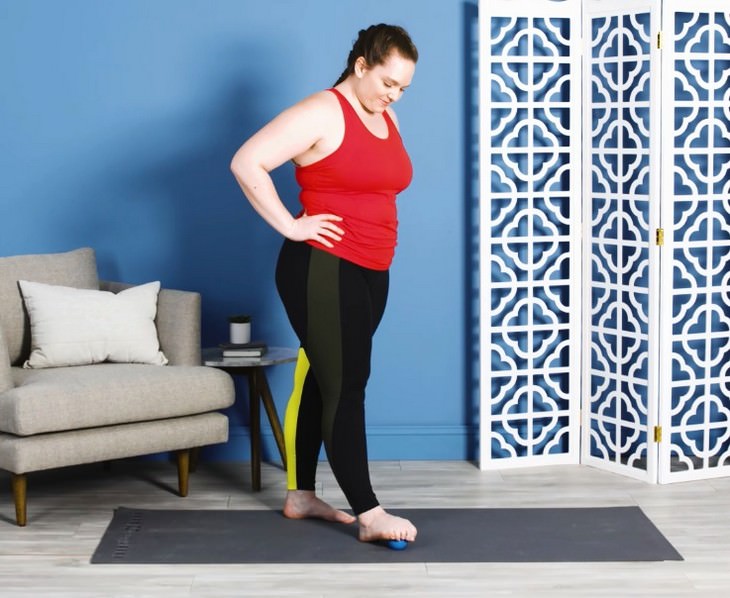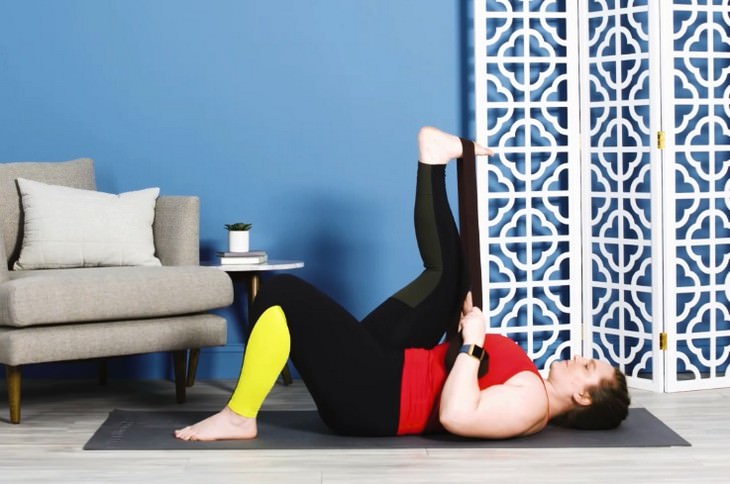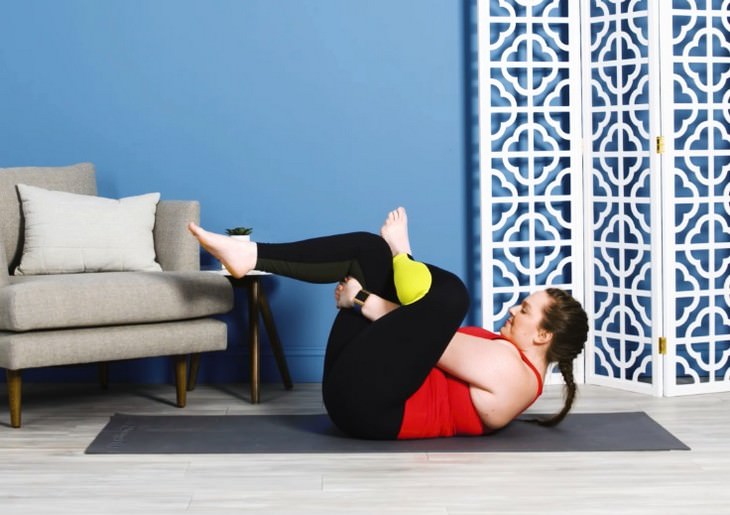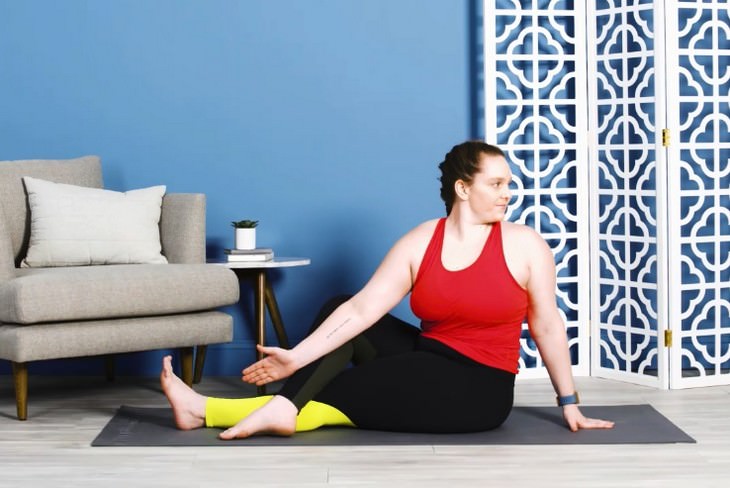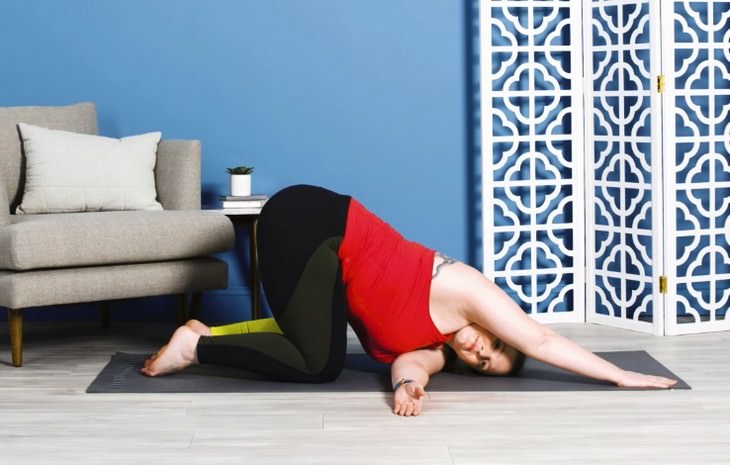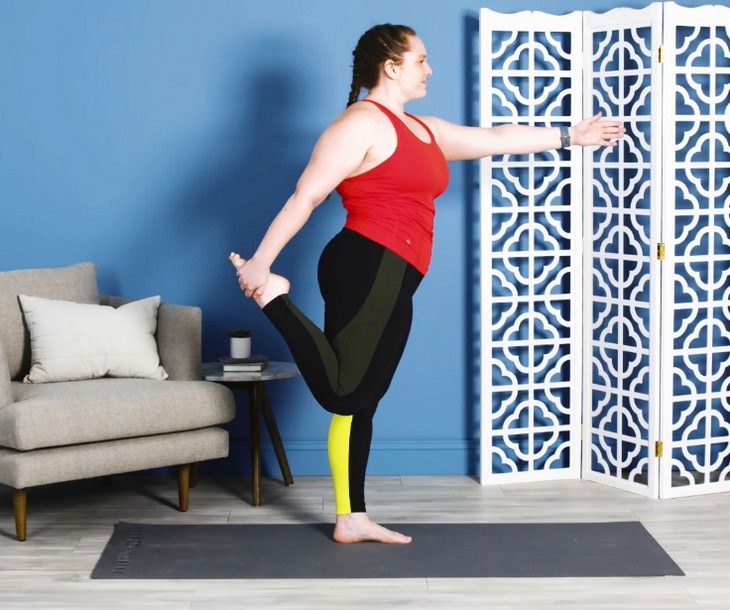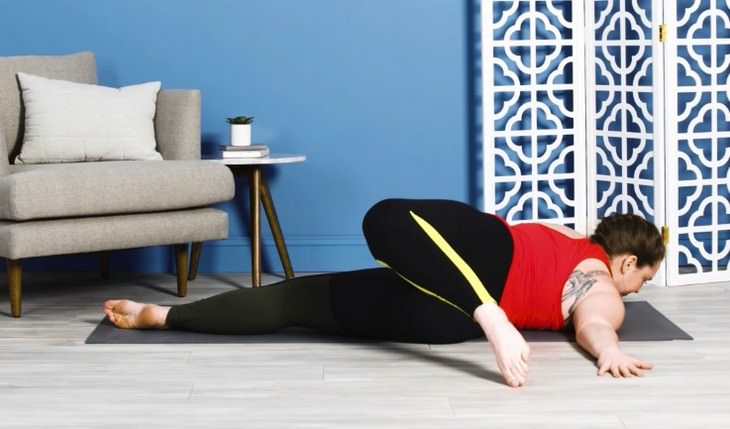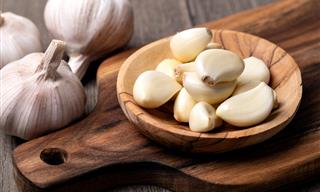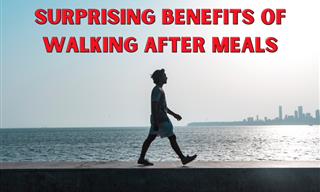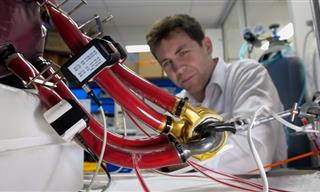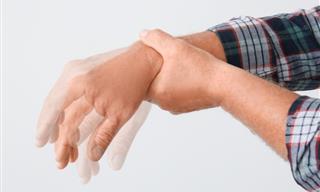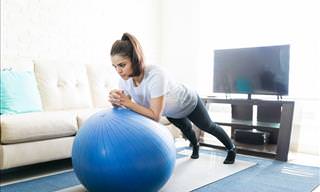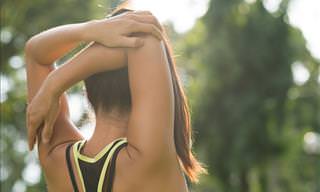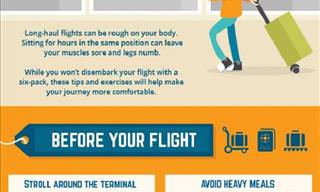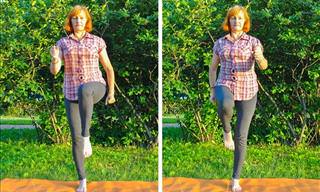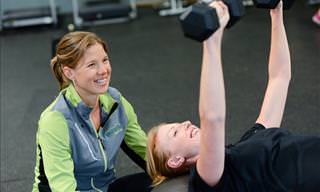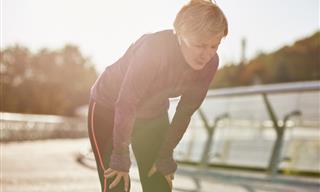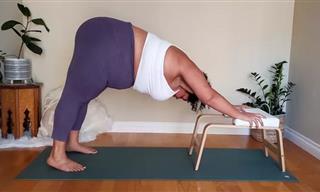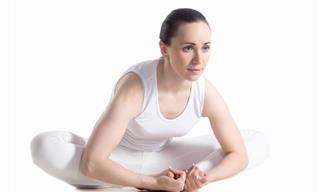Many of us, maybe even most of us, have daily schedules that include about 8 hours of sitting in front of a screen or performing the same tasks every day. With busy days and the power of routine, it’s easy to forget the importance of stretching the muscles. But there are consequences. After a long period of being static for many hours without stretching, one might start experiencing pain, muscle stiffness, and other nagging problems, according to fitness trainer Jamie Costello. To treat and prevent these issues, Costello recommends a series of light stretches that fit all abilities. It's best if you pick 4 stretches off the list and do each one for 2 minutes, at least once a day. If you stick to it, you may start seeing improvement in your flexibility in a matter of weeks.
1. Foam Roll
This simple stretch is especially important if you have a history of heel pain. The main area affected by this stretch is the plantar fascia, which is a ligament connecting your heel to the front of your foot. Almost 50% of Americans suffer from heel pain, and the most common cause is plantar fasciitis (This stretch may help ease the pain, but of course if you happen to suffer from plantar fasciitis it is recommended to consult a chiropractor as well).
How It’s Done:
• Grab a ball about the size of a golf ball and place it on the floor in front of you
• Stand with your back straight and your arms at the sides of your body as shown in the picture and place the center of your foot over the ball.
• Curve your toes forward as though you’re trying to wrap your foot around the ball, and try to stay in that position for 2 minutes, or repeat a few times with breaks if you need.
• Repeat with the second foot.
2. Foot Flex with a Resistance Band
This is another very simple stretch, which improves flexibility in two important parts of your leg: the calf muscles and the Achilles tendon, which is the largest and strongest tendon in the body. You will need an elastic stretch band and a padded flat surface to lie on, like a yoga mat. Both things can easily be found in sports stores or online.
How It’s Done:
• Lie on your back on the mat, bend your knees and place both feet flat on the floor.
• Lift up your left leg and wrap the band around the ball of your foot.
• Pull the ends of the band towards you, and lift up your left leg without locking your knee.
• Try to gently push upwards with your left foot, as much as you can without locking the knee.
• Try to remain in the position for 2 minutes, and then switch to your right leg.
Related Article: 14 Explained Stretches for Pain Relief
3. Figure 4 Stretch
The figure 4 stretch got its name because when practicing it your legs create a shape similar to the number 4. This exercise is mobilized to stretch the hip muscles, like the glutes and piriformis. Since tight hips can cause back stiffness, the figure 4 stretch can also be used to prevent back pains.
How It’s Done
• Lie on your back and place your left ankle over your right knee, as shown in the picture.
• Lift your legs so the right leg is in a 90 degree angle.
• Bend forward and wrap your hands around your right thigh. Meanwhile, make sure your left foot is parallel to the ground.
• Try to remain in that position for about 2 minutes, then release gently, go back to the starting point and switch to your other leg.
4. Hip Stretch
The core movement of this stretch is probably not one that you naturally do often. That might be the reason you experience lower back pain or soreness in your glute muscles after exercise. This stretch works exactly in those areas and might prevent such problems.
How It’s Done
- Lie down with your knees bent upwards and with both feet flat on the ground.
- Place your left ankle over your right knee. If you don't feel comfortable try placing your foot on your upper inner thigh.
- Without lifting your shoulder, turn your hips to the left until your left knee touches the ground or until you feel you’ve reached your limit.
- You can arch your right foot as shown in the picture, but do not lift it off the ground.
- Try to remain in this position for 2 minutes while taking deep breaths.
- Recover, relax and switch to the other leg.
5. Torso Twist
This stretch is also centered on the waist area. It improves the overall flexibility of the area and can prevent back pain. This time it’s the upper body that’s being stretched, and because the exercise is done while seated some might find it easier.
How It's Done
• Sit up with a straight back with your legs extended in front of you.
• Bend your right knee and bring your right foot over your left leg, place your foot right below the left knee. Make sure your foot is flat on the ground.
• Twist your upper body (including neck and face) to the left while placing your right arm on the inner right thigh as shown in the picture. Support yourself by placing your left hand behind you.
• Try not to lean on your left arm but keep your back and neck upright for 2 minutes, or until you’ve reached your limit. Go back to the starting point carefully and repeat the stretch in the opposite direction.
6. Thread the Needle Stretch
This stretch is a bit challenging compared to the previous ones, but it’s worth a try, especially if you suffer from pain and stiffness around your shoulders and upper back. If the mat you’re using is thin, you may add a blanket (or any soft material) underneath your knees, to prevent pain.
How It’s Done:
• Begin on your hands and knees. Keep your hands under your shoulders and your knees under your hips.
• Open up your chest to the right as you extend your right arm over the ceiling.
• Begin to move your right arm under your chest toward the mat. Your torso should naturally shift to face downwards.
• Continue to slide your right arm onto the mat, allowing your right shoulder to rest on the mat. Meanwhile, extend your left arm overhead, and rest the side of your head on the mat.
• Try to remain in the position for 2 minutes, and repeat the exercise in the opposite direction.
7. Standing Quad Stretch
The name actually stands for the muscle that is being stretched – the quadriceps, which is the largest muscle in the body. It requires a bit of balance, so you may place a chair nearby to hold onto in case you stumble.
How It’s Done:
• Bend your left knee backward by grasping your ankle with one hand.
• Assist in bending your knee back as far as possible.
• Find a spot to focus your gaze on and stretch your right arm in a 90-degree angle as shown in the picture.
• Try to maintain the position for 2 minutes and repeat the exercise with your other leg.
8. Chest on the Ground Stretch
This last stretch may seem challenging, but it’s worthwhile as it works on your chest muscles, pelvis, and upper shoulder area. If you’re having a hard time keeping your head up during the exercise, you may support your head with a small pillow.
- Lie on your stomach with your arms stretched to the sides, hands facing the mat and feet flexed backward.
- Bend your left knee, lift your leg and bent it to the right along with the right side of your pelvis and lower chest.
- Make sure your left shoulder stays firmly on the ground.
- Try to touch the ground with your toes (of the left foot) as shown in the picture, only if you feel you’re capable.
- Remain in the position for about 2 minutes, then carefully go back to the starting point and repeat with the other side of your body.
Images Source: prevention.com
 Go to BabaMail
Go to BabaMail


